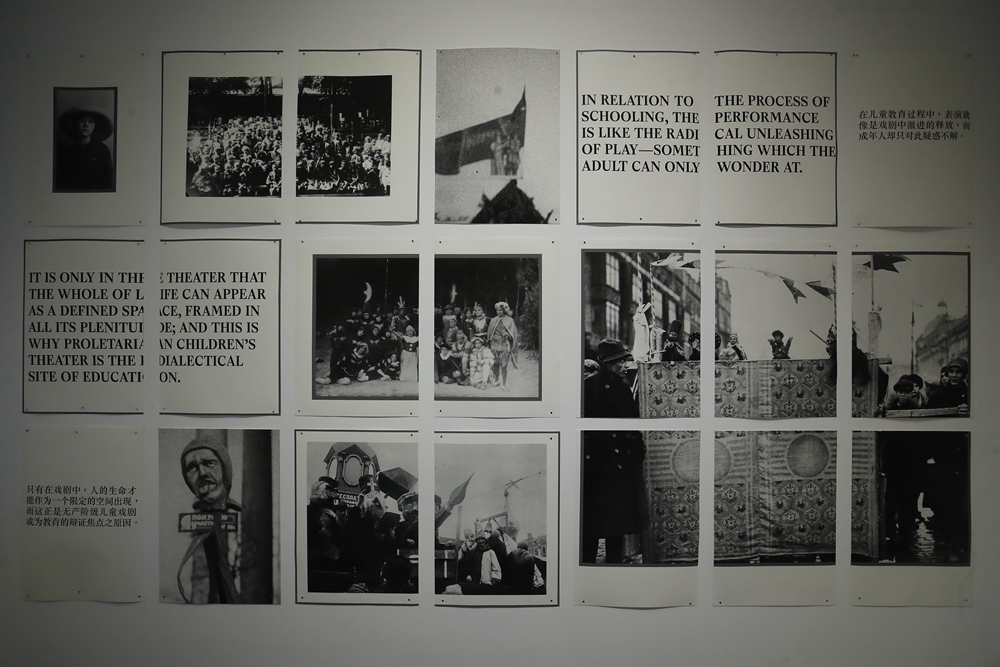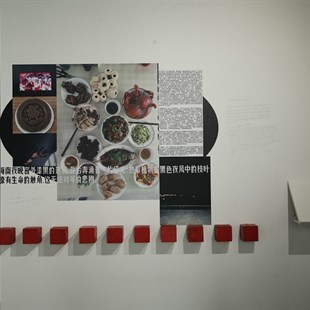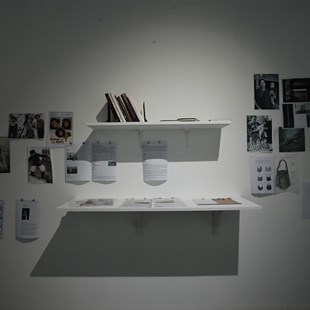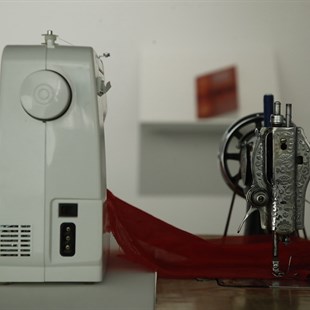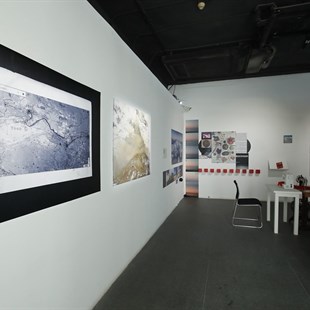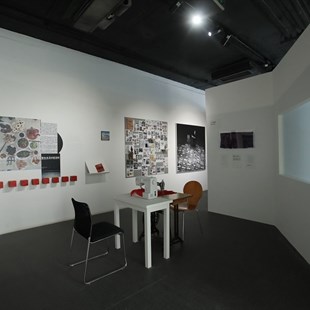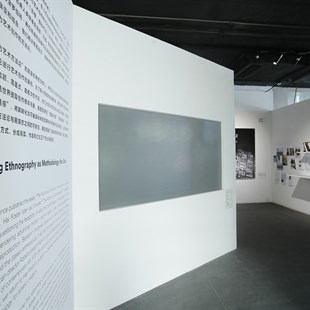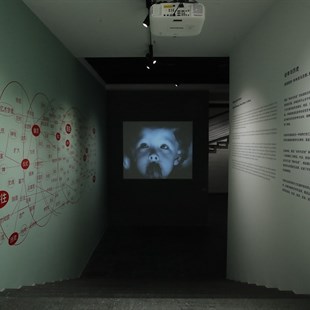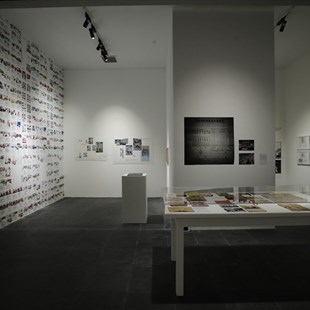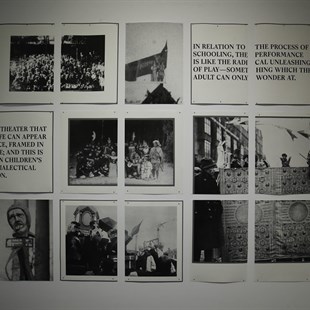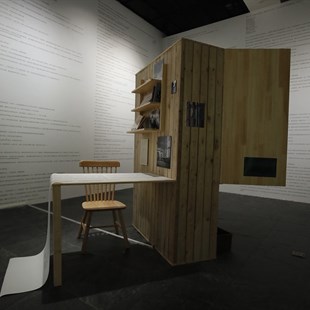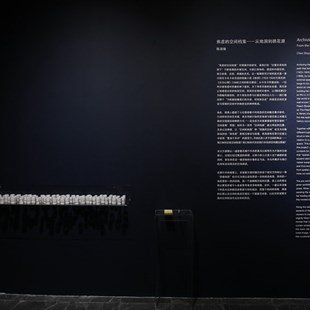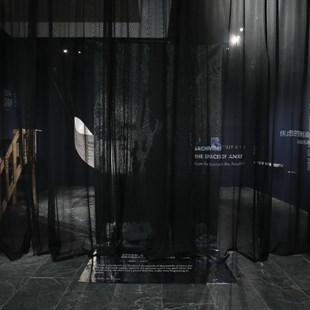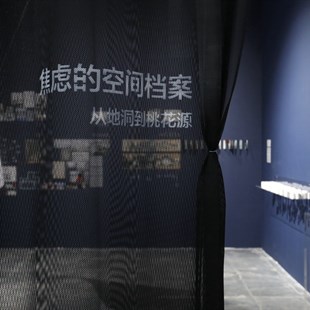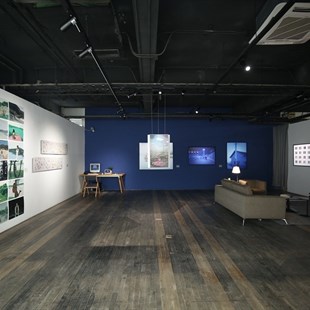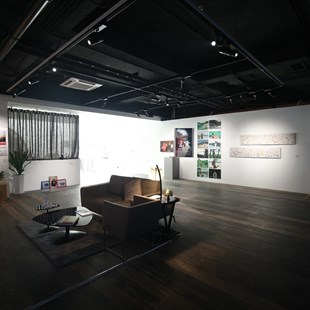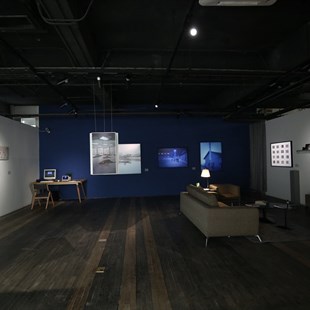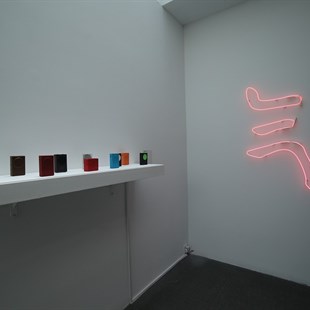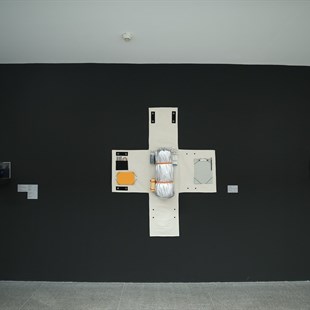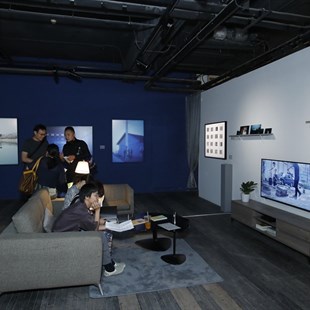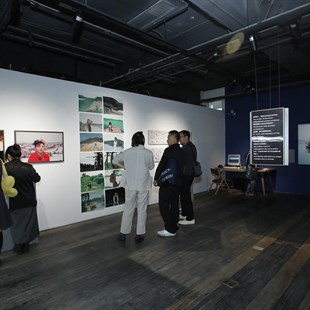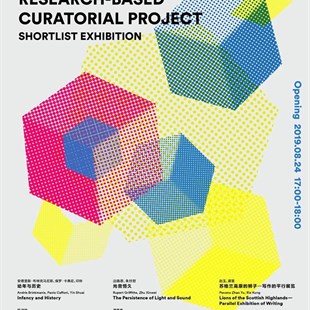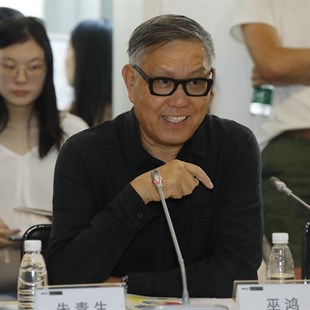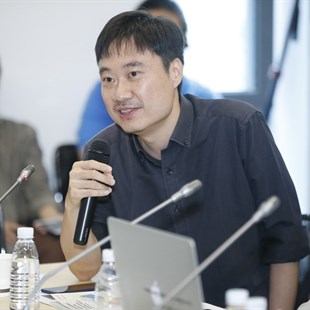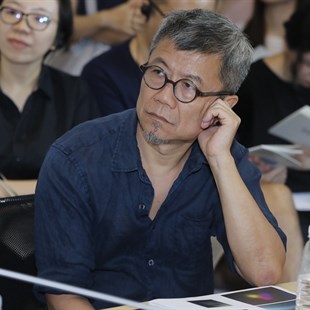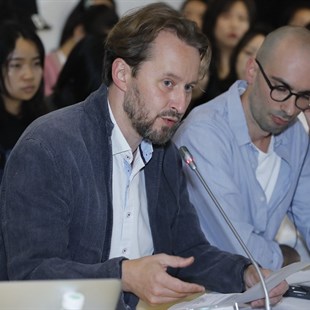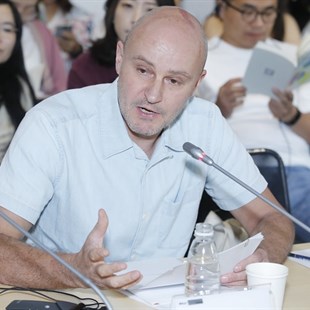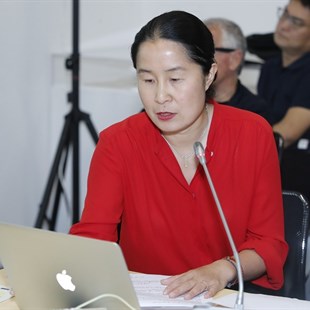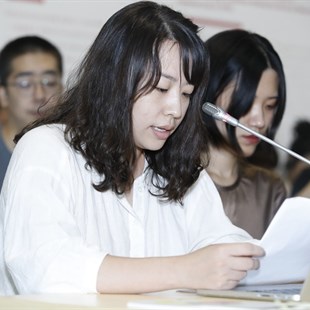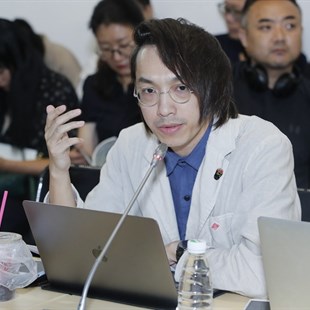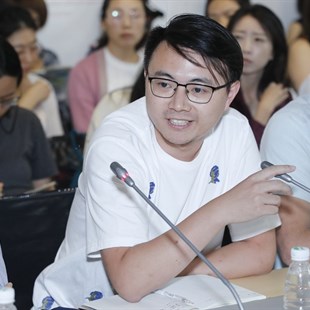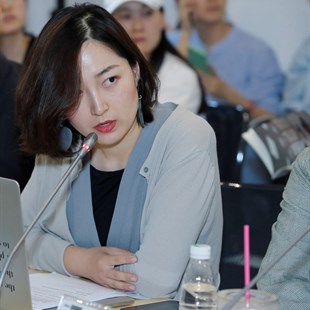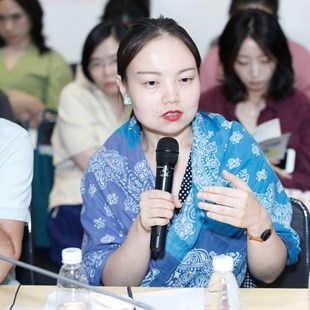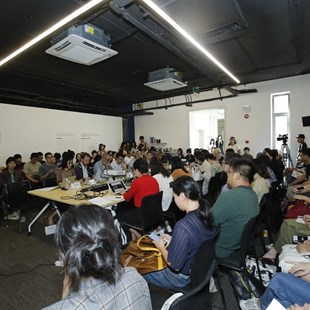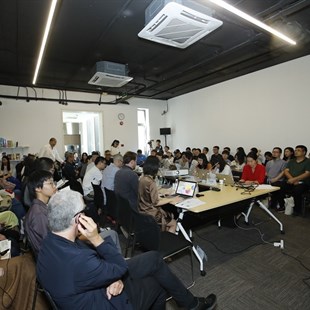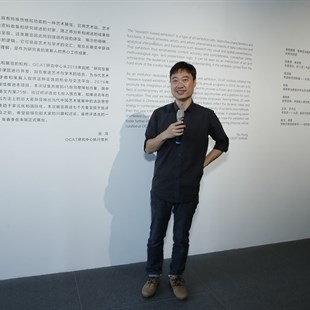With the inclusion of increasingly diversified art media and materials in the field of contemporary art, artists’ thoughts are able to be conveyed and interpreted by more diverse languages, while curators are open to numerous challenges and inspiration. In the age of information, the representation of research-based exhibitions showcase their distinction in terms of the conceptual structure and research foundation in such a splendid environment of contemporary art and exhibitions.
What are research-based exhibitions? What does “research-based” mean? What is the relationship between such exhibitions and academic writing? All these questions were discussed in the workshop and opening of “2019 Research-based Curatorial Project: Shortlist Exhibition” organized by OCAT Institute Beijing on 24th August 2019. By inheriting the practice of the first edition of Research-based Curatorial Project in 2018, this year, OCAT Institute has selected seven projects showcasing the characteristics of diversification, interdisciplinarity and internationalization, namely, “Infancy and History” by Andris Brinkmanis, Paolo Caffoni and Yin Shuai, “The Persistence of Light and Sound: An Archaeology of Atmosphere” by Rupert Griffiths and Zhu Xinwei, “Archiving the Spaces of Anxiety: From the Burrow to the Peach Colony” by Chen Shuyu, “Rethinking Ethnography as Methodology for Art” by Duffy Du, “Global Echoes: An Anthropology of Sound” by Pan Yuxi, “The Story of Finding Differences – Human Traces, Intercity, and Transformation of the World” by Wang Huan and Wang Ziyuan and “Lions of the Scottish Highlands – Parallel Exhibition of Writing” by Pocono Zhao Yu and Rie Kung.
Wu Hung, Executive Director of OCAT Institute, interprets the notion of a “research-based exhibition” as a type of art exhibition with distinctive characteristics and functions. From his point of view, this exhibition “treats artworks, artists, and artistic phenomena as objects of data collection and analytical interpretation, and transforms such research into visual and spatial presentations (Wu Hung, 2019).” As the intersection of the Academic and Art, various reflections led by contemporary research-based curatorial projects can be observed in these shortlisted projects.
I. How to understand “research-based”?
At the workshop before the opening ceremony, curators discussed the notion of “research” based on their own projects. To understand this concept, the clarity of what we are actually studying is necessary. Mr. Wu Hung has roughly divided these seven projects into three categories after the curators’ presentations.
The first category is “theme research” which sounds most familiar by us. Namely, the objects of research are specific communities, histories and cultural phenomena etc., which can lead viewers to certain contexts. Project “Infancy and History” takes the title and inspiration from Italian philosopher Giorgio Agamben’s exploration in the philosophy of infancy. On the basis of this, curators would like to respond to some of the working methodologies indicated by Agamben, explore “infancy” and “history” as intertwined references as well as translating them to the realm of aesthetics and visual arts.
Another example of this category is the project “The Story of Finding Differences – Human Traces, Intercity, and Transformation of the World” which focuses on the notion of “county town youths”. Taking the community that is unnoticed, in constant migration and adaptation as the research object, curators would like to place this group of people in the torrent of pressing changes and imply that the rapid development of Chinese urbanization confronts us all.
The second category shows the reflections on methodologies, namely, to research on “research” itself. The project “Rethinking Ethnography as Methodology for Art” re-emphasizes the statement “the artists as ethnographer” put forward by Hal Foster. The curator once again regards the ethnography as an artistic methodology to conduct various case studies of young artists who develop their art practice based on different social and cultural contexts as well as personal experience.
The project “Lions of the Scottish Highlands – Parallel Exhibition of Writing” is developed from the Long Reading Project of the Chinese art magazine Art World. By referencing the film terminology “MacGuffin” – vital elements in terms of promoting the development of storylines, curators wish to explore when narrative is the significant component for an artwork, it is its own justification. Fifteen articles from twelve authors are utilized to discuss the methodology of “narrative continuity”. Besides, the practice regarding the mutual transformation between paper writings and exhibition spaces are expected at the same time.
The third classification of curatorial projects seems to conduct research of both media and concepts. It enables an increasing diversification of the study of objects from research-based exhibitions. Through the research of atmospheres, the project “The Persistence of Light and Sound: An Archaeology of Atmosphere” expands the meteorological notion of air to the concept of affective atmosphere. Curators are concerned with the question of how artists approach and work with such atmospheres – some take air as media while others focus on the state of absence or quietude. By doing so, this project intends to explore how contemporary imaginations of humans and nature reflect, refract, amplify and distort one another.
II. Research-based Exhibition and Academic Writing
Guo Weiqi, Academic Director of OCAT Institute, proposed the problem regarding the relationship between the research-based curatorial project and academic writing. To answer this question, curators exchanged ideas on the research-based exhibition in academic history by exemplifying their own curatorial plans.
From Wang Huan and Wang Ziyun’s viewpoints, they believe that the existing academic research is partly served by fundamental construction. However, divergent and creative thinking are also worth waiting for. For the specific case of “county town youths” they would like to bypass the existing academic research on this notion at the very beginning. However, they gradually realized that it is impossible to avoid the academic field along with the in-depth process of their research. But Wang Ziyun has pointed out that the specific issues addressed in some works have deviated from the previous academic history context over time. In this case, curators and artists are required to generate new discussions in artworks. Therefore, changes during the era turn to constitute a supplement in academic history. In addition, responses outside specific disciplines showcase significance in terms of completing academic history as well.
Curator Pan Yuxi intends to achieve the mutual reference between contemporary art and archaeology in her project “Global Echoes: An Anthropology of Sound”. She mentioned that she did not include the concept of archaeology and anthropology at the very beginning of her research. However, by digging into relevant practices in this area, she noticed that contemporary artists have a fascination with “appropriation”. They do not just appropriate pre-existing images and objects from diverse cultures, but they also borrow useful strategies and methods from other disciplines. Contemporary artists themselves take on roles of ethnographers, archaeologists and anthropologists to conduct art practices. In Pan’s proposal, interdisciplinary ideas can integrate the academic history of various fields. Research and curation are an interactive process to provide mutual reactions to each other. When mythologies in one field is practiced and discussed in other realms, the birth of dynamic and vivid interpretations and supplements in academic history may happen.
III. Research-based Exhibition as Contemporary Art
Zhu Qingsheng, Guest Observer of this curatorial program, holds the view that a research-based exhibition does not mean that research is done via the exhibition. Instead, this selective activity is more like a contemporary art practice. Mr. Wu Hung added that people get used to limiting research in paper-based media. Although a number of studies of spaces or materials were conducted, they have always required the text to be intermedia to translate and deliver them. Is there any possibility that space or material itself is the king of research?
When confronting the subject “Infancy and History”, Andris Brinkmanis, Paolo Caffoni and Yin Shuai’s challenge lies in the selection of abundant materials. Sorting out archives and artworks that can be applied to three curators’ common experience means that curators act as the main subject to inspire the landing point, objects and process of their research. It can also be proofed in Cheng Shuyu’s curatorial project “Archiving the Spaces of Anxiety: From the Burrow to the Peach Colony”. She proposed this project based on her practice and study of contemporary theater and stage art. It takes its form from a transitional path that links Kafka’s unfinished short story The Burrow (1923-1924) and Wu Li’s painting White Cloud and Green Mountain (1668). Both the burrow, dug by the underground residents on the purpose of seeking for a sense of safety, and the entrance to the Peach Blossom Spring implied in the painting scroll, present the anxiety caused by the gap between literary and artistic imagination and the real space. It leads Chen together with seven artists who research, act and create around different types of spatial concepts, to explore “special archives” and “archival spaces” that mutually expand each other in a heterotopia of spaces and subjects.
Similarly, curator Zhu Xinwei, who has the literary background and artist Rupert Griffiths, who has experience related to geography, demonstrate the vitality in their project. Impressed by the open-minded exhibition space, they transformed the idea of “essay exhibition” to achieve the so-called “research-based” request, towards building up exhibitions via raising new issues and developing special dialogues from the exhibition itself. This dialogue based on the multicultural background of initiators has enabled the discussion of issues in the contemporary art field to be addressed in a broader context.
In this case, the increasingly open and diversified interpretation of the research-based exhibition is embodied by curators through regarding the exhibition itself as a piece of contemporary work – it discusses current society and culture, reflects on the previous experience while intending to refine the contemporary meaning of history; meanwhile, it is placed in a process of evolution and showcases a state that is unfinished. Therefore, the state of curators is fluid, and the identity of them is constantly changing. The exhibition will never be the end of one’s research. “We cannot convey all our research in an exhibition. Rather, the exhibition is a process of our research (Curator He Yining, 2019).”
Text by Emily Weimeng Zhou
Edit by Sue/CAFA ART INFO
Photo courtesy of the organizer


